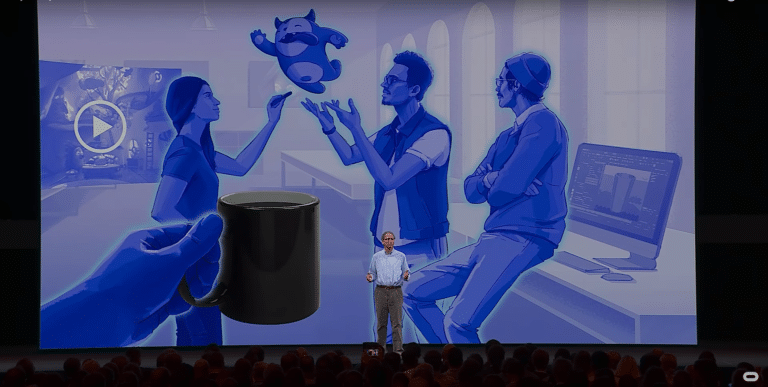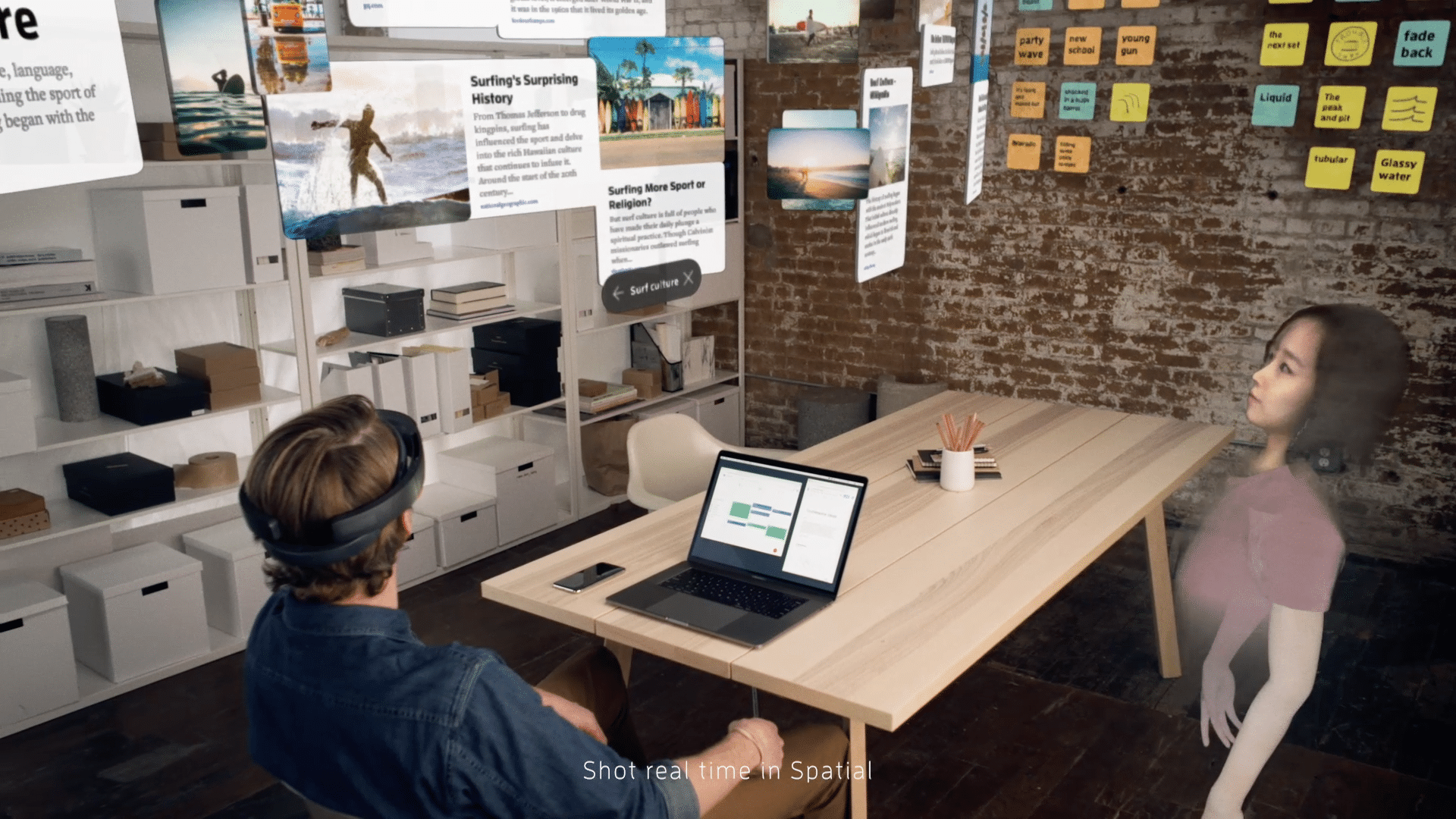
“Trendline” is AR Insider’s series that examines trends and events in spatial computing, and their strategic implications. For an indexed library of spatial computing insights, data, reports and multimedia, subscribe to ARtillery PRO.
We recently speculated if the virtual office is AR’s killer app. Though a further-off reality and bit of future-gazing, it was prompted by then-recent comments from Mark Zuckerberg about AR-fueled remote collaboration to reduce pollution, stress and economic impacts of commuting.
That thought exercise now gains relevance through the lens of today’s pandemic crisis. Resolving macro-economic and environmental detriments of commuting takes on new meaning and urgency when many of us have been forced to work remotely. Could this be a blessing in disguise?
Stepping back, I’ve worked from a home office since 2002. Forced into it — and initially opposed due to unfamiliarity — I didn’t like the isolation. But after acclimating, I became more productive, happier, and healthier than in any previous office job. Now, 18 years later, I may never go back.
So the question I’ve pondered over the past week is will that same realization sink into the broader corporate ranks now forced to #WFH? And could that engender a sort of silver lining in the form of new perspectives? In being forced to try new things, could we make valuable discoveries?

New Light
Those discoveries for me have included things like avoiding office distractions. Anyone who says people are more “effective from the office” ignores the finite share of the day spent doing actual work. The rest is status meetings, water cooler talk, commuting and getting ready for work.
I’ve also channeled pent-up energy from being isolated into productive directions. That includes going to the gym (or in-office TRX) consistently for 90-minutes per day for the last 10 years. I’m in the best shape of my life and could live longer due to years of daily cardio and weight training.
Not having to commute has meanwhile been one of the great mental releases of the last 20 years. I’m more at ease and productive, as the 52 minutes of daily commuting for the average American has been redeployed in getting more work done… and the aforementioned fitness routine.
Lastly, this streamlined playbook helped mold AR Insider and ARtillery Intelligence’s lean business model. That includes capital efficiency and hyper-productivity — reaching surprising levels of content output for such a small team. It’s all about preserving heads-down time versus meetings.
Targeted Approach
But that’s just us. Benefits for others could come to light in a corresponding “forced realization.” Those benefits could include reducing fixed-costs like locations where everyone to goes to work at once. Less square footage can be leased for streamlined operations or alternate occupancy.
Though most companies won’t suddenly go fully virtual after Covid-19 recedes, they could rethink the paradigm of everyone coming in at once. We could all realize this was mostly habit and repetitive motion. Rethinking the model ground-up for today could yield streamlined models.
Reducing or alternating days in the office could likewise have environmental impact. Benefits are already evident in clear skies and we could get empirical data after this is all done. Also consider fewer traffic accidents. Could the term “rush hour” relegate to a colloquialism of the past?
Meanwhile, there’s existing momentum for remote work. Though legacy management tendencies linger in the need to lord over a building full of employees from a corner office, that’s eroding — exemplified by companies like GitLab which thrives on 1,200 remote people.

Individual Choice
All of the above is admittedly from the biased position of a born-again #WFH advocate. It’s not for everyone, and obviously doesn’t work in non-corporate functions that require high-touch interaction — everything from doctors to air traffic controllers. But it’s applicability is still growing.
That’s been the case for a while given collaboration and productivity software like Slack and Zoom. Immersive technology like VR collaboration and AR remote assistance meanwhile continue to advance and assimilate in the enterprise. Now they could really get their chance to shine.
That brings us back to Zuckerberg’s comments. Remote work has long-been on the list of AR’s potential use cases and killer apps. Could current events accelerate that? Could there be a sort of forced enterprise re-evaluation of benefits offered by AR collaboration tools like Flow and Spatial?
Or will we go back to the way it was? Many people are eager to get back to their commutes and water cooler talk. Then there’s Charter Communications, so entrenched in the ideology that work only gets done under management’s physical watch, it overruled health & safety consensus.
Mother of Invention
Whether my biased position or that of Charter is right, companies will have to make their own decisions. The point is we’ll all now get the chance for a new perspective. And that may force discoveries we wouldn’t have gotten otherwise. After all, necessity is the mother of invention.
Some may discover they’re more productive. Companies may find it’s more streamlined and economical to shed square footage. With people off the roads, less transit-stressed and maybe even exercising more, they may — like me in 2002 — never go back to the traditional office.
As that happens with various companies to various degrees, AR could have an important role in bringing the in-person benefits of interaction and collaboration to remote work. And that could be the inflection it needs, born through its freshly-discovered utility to support the new normal.
For deeper XR data and intelligence, join ARtillery PRO and subscribe to the free AR Insider Weekly newsletter.
Disclosure: AR Insider has no financial stake in the companies mentioned in this post, nor received payment for its production. Disclosure and ethics policy can be seen here.
